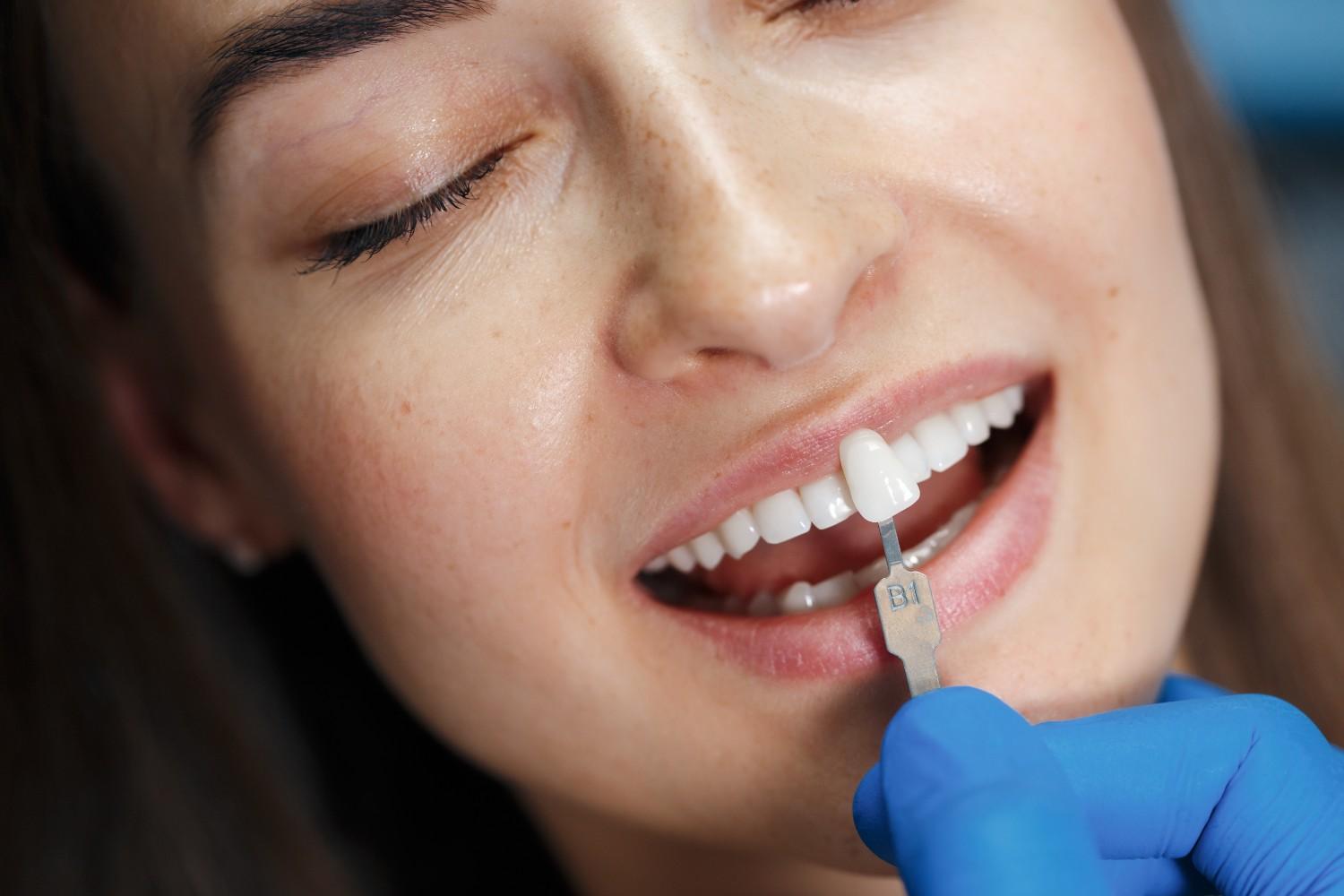
If you’ve searched for dental veneers before and after photos, you’ve likely seen stunning smile transformations that seem almost too good to be true. The truth is, modern cosmetic dentistry can deliver dramatic, natural-looking results, but only when the treatment is carefully planned, properly executed, and matched to the right patient. Veneers are not a magic fix, but for those with minor cosmetic imperfections like discoloration, chips, gaps, or slight misalignment, they offer one of the most effective paths to a confident, radiant smile. In this comprehensive guide, we’ll go beyond the glossy images to explain exactly how veneers work, what realistic outcomes look like, the differences between porcelain and composite options, the full treatment process, long-term care, and what makes a successful dental veneers transformation possible, with expert insights from Sasane Dental Clinic.
What Are Dental Veneers? Types, Uses & Benefits
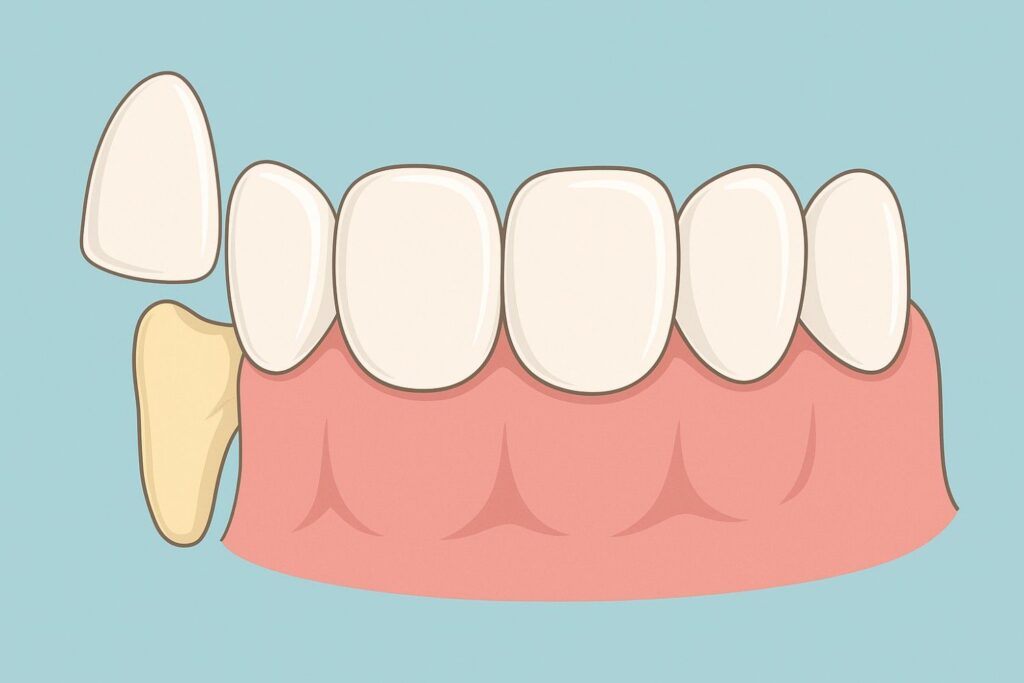
Dental veneers are ultra-thin, custom-fabricated shells, typically between 0.3 to 0.7 millimeters thick, that are permanently bonded to the front surfaces of your teeth to enhance their shape, color, size, and alignment. They are primarily used for aesthetic purposes and are not intended to restore function in severely damaged or decayed teeth.
There are two main types:
- Porcelain Veneers: Made in a dental laboratory from high-strength ceramic, these mimic the light-reflecting properties of natural enamel. They are highly resistant to staining, durable, and considered the gold standard for long-term cosmetic results.
- Composite Veneers: Sculpted directly onto the tooth using a tooth-colored resin material, these are applied in a single visit, require less enamel removal, and are more affordable, but are more prone to chipping and discoloration over time.
Both types require healthy underlying teeth and gums. Veneers are not recommended for patients with active decay, untreated gum disease, severe bruxism (teeth grinding), or significant bite misalignment, as these conditions can compromise the longevity and success of the restoration.
Dental Veneers Before and After: What Changes to Expect
The visual impact of veneers before and after results can be profound, but it is crucial to understand the scope and limitations of what veneers can achieve.
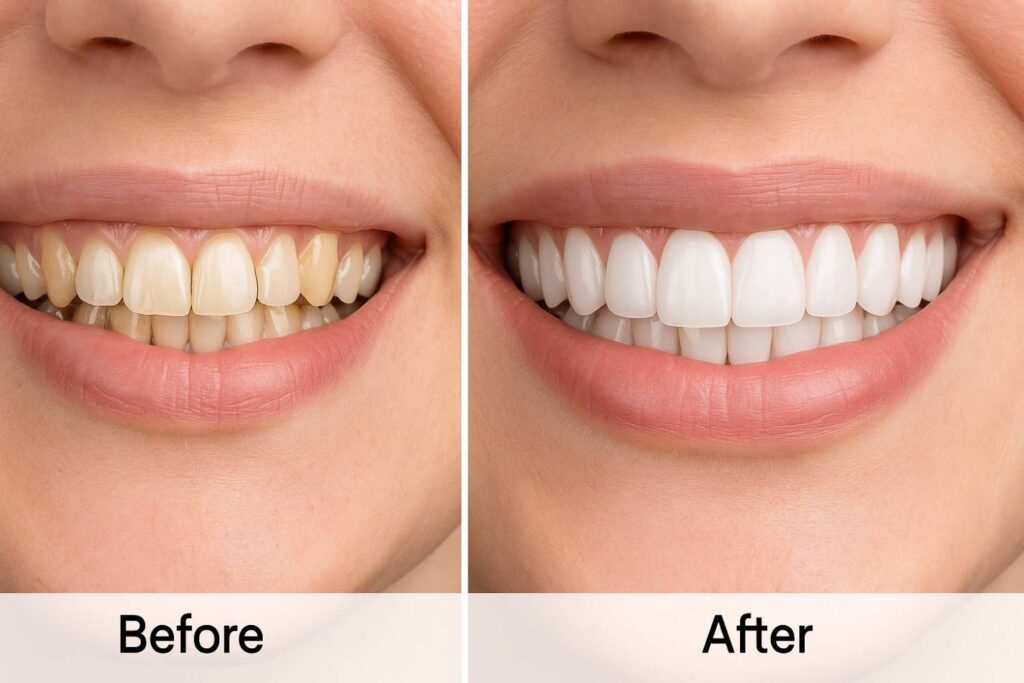
What veneers CAN correct:
- Permanent tooth discoloration (for example, from tetracycline, fluorosis, or root canal treatment)
- Minor gaps (diastemas) between front teeth
- Slight crowding or rotation that does not affect bite function
- Worn-down, chipped, or fractured enamel
- Irregular tooth shape or size (for instance, peg laterals)
- Asymmetrical gum lines (when combined with gum contouring)
What veneers CANNOT fix:
- Severe malocclusion (overbite, underbite, crossbite)
- Major tooth misalignment requiring orthodontics
- Missing teeth (implants or bridges are better solutions)
- Advanced gum recession or bone loss
- Functional issues like TMJ disorders
The most successful smile makeover before and after outcomes come from patients who have realistic expectations and work with a dentist who prioritizes facial harmony, lip dynamics, and natural tooth proportions, not just uniform whiteness. A skilled cosmetic dentist will design veneers that complement your age, skin tone, and personality, avoiding the “Hollywood smile” that looks unnatural.
Real Patient Transformations: Dental Veneers Before & After Photos
Authentic dental veneers before and after cases reveal the true potential of this treatment. At Sasane Dental Clinic, we document every transformation with standardized photography to ensure transparency and set accurate expectations.
Case 1: Tetracycline Staining
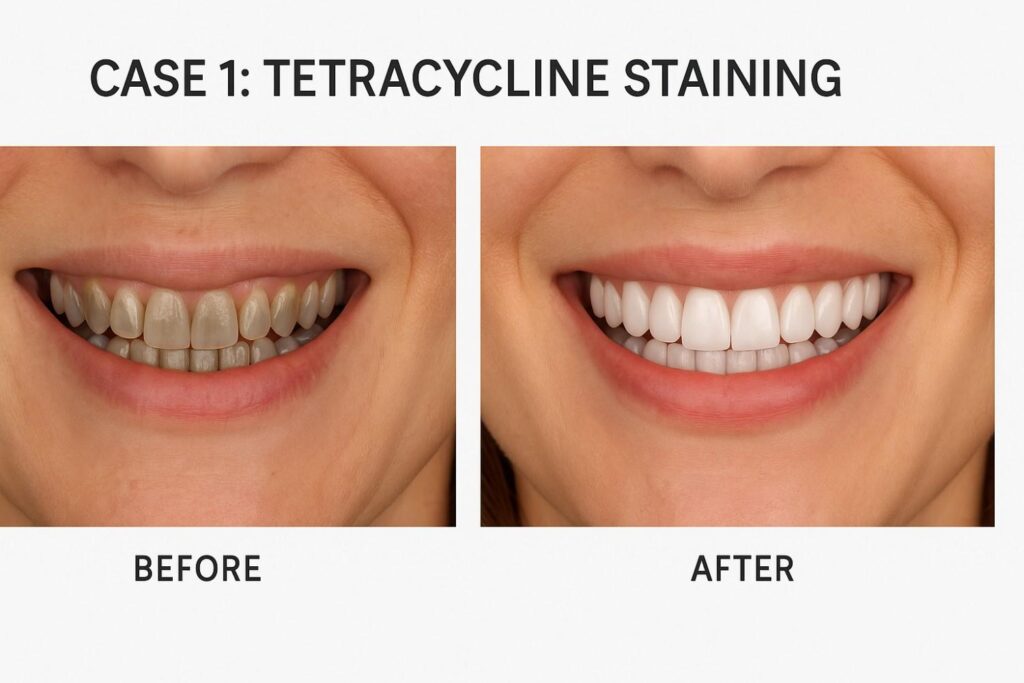
A 32-year-old woman had deep gray-brown staining from childhood antibiotic use. Whitening failed repeatedly. After placing eight upper porcelain veneers with a carefully selected shade that looked bright but not artificial, her smile appeared naturally luminous. The porcelain veneers before and after were striking, yet colleagues simply said, “You look well-rested,” not “You got veneers.”
Case 2: Worn and Gapped Teeth
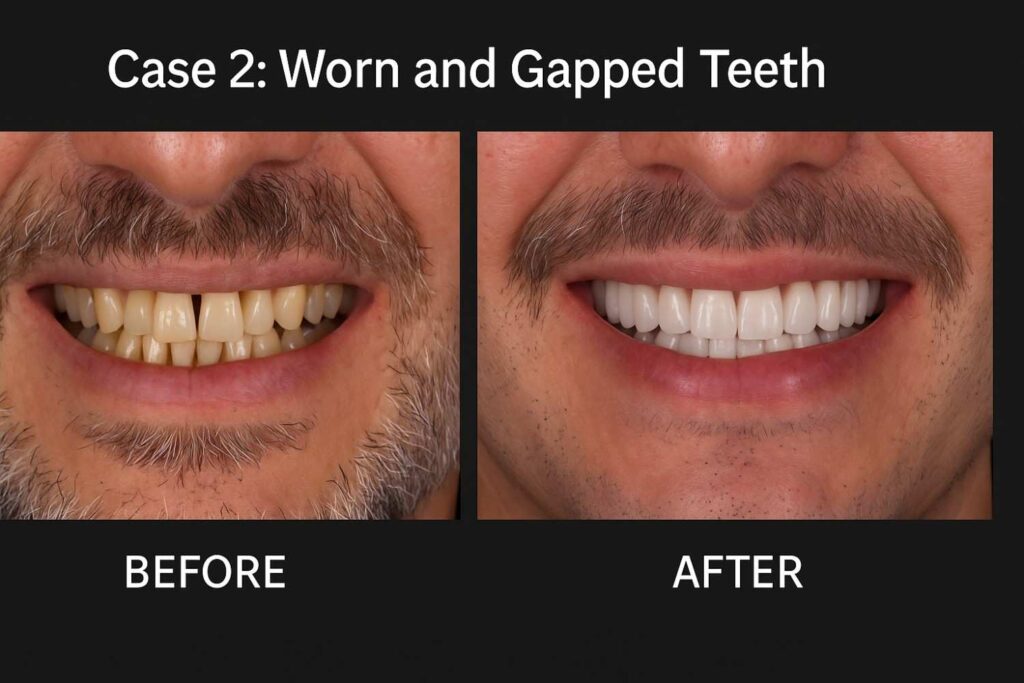
A 45-year-old man had years of enamel wear from acid reflux and a small gap between his central incisors. We used ten porcelain veneers to restore length, close the gap, and create a balanced incisal edge. His veneer teeth before and after result gave him back a youthful, functional bite and a confident smile.
Case 3: Quick Fix with Composite
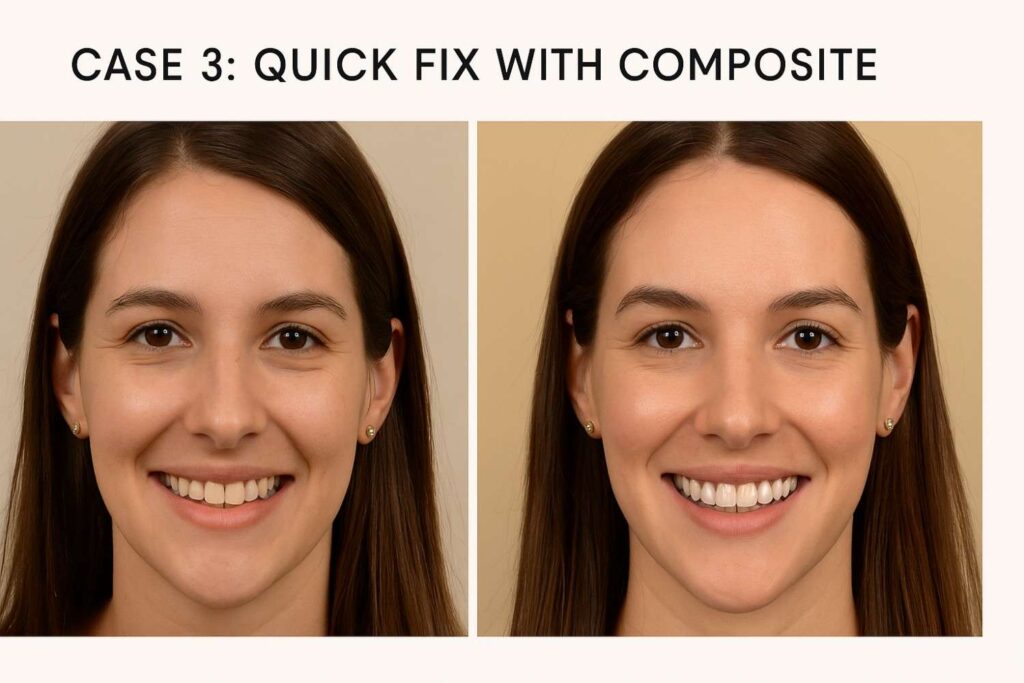
A 28-year-old patient needed a fast, budget-friendly solution before her wedding. We applied four composite veneers to close minor gaps and reshape slightly uneven edges in one appointment. While not as long-lasting as porcelain, the composite veneers before and after result was immediate and satisfying for her short-term goals.
These examples show that cosmetic dentistry veneers are highly customizable, but success hinges on proper diagnosis, material selection, and artistic execution.
Dental Veneers Procedure: Step-by-Step Process
The journey to your new smile typically involves three key phases:
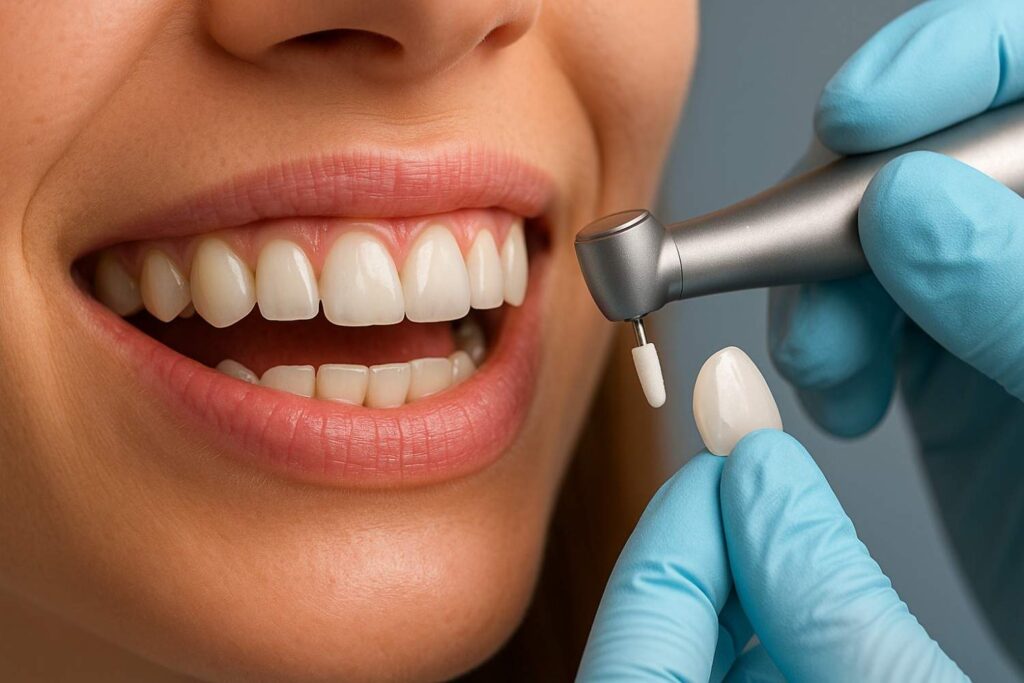
1. Consultation and Treatment Planning
Your dentist will evaluate your oral health, discuss your aesthetic goals, and take digital photographs, X-rays, and 3D scans. At Sasane Dental Clinic, we use digital smile design software to simulate your dental veneers transformation in real time. You will see a virtual preview of your dental veneers before and after look and can adjust shape, length, and shade before any work begins.
2. Tooth Preparation (for Porcelain Veneers)
A minimal amount of enamel, usually 0.5 mm, is gently removed from the front surface of each tooth to create space for the veneer. This ensures a seamless fit and prevents a bulky appearance. Local anesthesia is used for comfort. Impressions or digital scans are sent to a dental lab. Temporary veneers may be placed for one to two weeks while your final restorations are fabricated.
Note: Composite veneers often require little to no enamel removal and are built directly onto the tooth in a single visit.
3. Bonding and Final Adjustments
During your final appointment, the dentist will try in each veneer to check fit, color, and bite. Once approved, the teeth are cleaned, etched, and the veneers are bonded using a light-cured resin cement. Excess material is removed, and the bite is fine-tuned. You will receive detailed aftercare instructions and a follow-up appointment is scheduled to ensure comfort and function.
Total time: two to four weeks for porcelain; one to two visits for composite.
Dental Veneers Benefits: Why Choose Them?
When performed correctly, veneers offer significant advantages:
- Immediate aesthetic enhancement: Achieve a complete smile upgrade in just a few visits
- Stain resistance: Porcelain resists coffee, red wine, and tobacco far better than natural enamel
- Customized design: Every veneer is tailored to your facial features, lip line, and gum architecture
- Durability: With proper care, porcelain veneers last 10 to 15 years or more
- Minimal invasiveness: Compared to crowns, veneers preserve more of your natural tooth structure
- Confidence boost: Studies show improved self-esteem and social engagement after cosmetic dental work
As a leading application in cosmetic dentistry veneers, they bridge the gap between subtle enhancement and full reconstruction.
What to Know Before Getting Dental Veneers
Before committing, consider these critical factors:
- Irreversibility: Enamel removal means your teeth will always need protection. This is not a trial treatment.
- Cost: Porcelain veneers typically range from $900 to $2,500 per tooth; composite from $250 to $600. Most dental insurance does not cover cosmetic procedures.
- Not for everyone: Patients with bruxism must wear a night guard; those with gum disease must achieve periodontal health first.
- Sensitivity: Temporary sensitivity to hot and cold is common after preparation but usually resolves within days.
- Maintenance: Veneers can chip or debond if misused, for example, opening bottles or chewing ice.
- Color permanence: You cannot whiten veneers later, so choose your shade wisely, ideally after whitening your natural teeth if needed.
A thorough consultation with a qualified cosmetic dentist is non-negotiable.
Dental Veneers Aftercare: Tips for Longevity
Longevity depends on how you care for your veneers:
- Oral hygiene: Brush twice daily with a soft-bristle brush and non-abrasive toothpaste (avoid whitening pastes). Floss daily to prevent plaque buildup at the gumline.
- Avoid hard or sticky foods: Do not bite into apples, carrots, or candy with your front teeth. Cut food into pieces instead.
- Protect against grinding: If you clench or grind, wear a custom night guard to prevent fractures.
- Regular dental visits: See your dentist every six months for professional cleanings and to check veneer integrity.
- Limit staining agents: While porcelain resists stains, the bonding cement can discolor over time with heavy coffee, tea, or smoking.
With disciplined care, your porcelain veneers before and after investment can remain beautiful for 15 years or longer. Composite veneers may need repolishing or replacement every five to seven years.
Final Thoughts on Dental Veneers Before and After Results
A dental veneers before and after transformation is more than a cosmetic upgrade. It is an investment in your self-image and daily confidence. But the quality of your results depends entirely on the expertise of your dental team, the materials used, and your commitment to maintenance.
At Sasane Dental Clinic, we approach veneers as both a science and an art. Using digital diagnostics, high-quality ceramics, and a patient-centered philosophy, we create smiles that look naturally radiant, not manufactured. From your first consultation to your final reveal, we ensure every detail aligns with your vision and oral health needs.
If you are considering veneers, do not rely on filters or stock photos. Schedule a consultation with a trusted cosmetic dentist to see what is truly possible for your unique smile.
FAQs About Dental Veneers Before and After
Q: What Are Dental Veneers and How Do They Work?
A: Dental veneers are thin custom-made shells bonded to the front of your teeth to improve their appearance by masking stains, chips, gaps, or minor misalignment.
Q: How Much Do Dental Veneers Cost in India?
A: In India, porcelain veneers typically cost between ₹10,000 and ₹25,000 per tooth, while composite veneers range from ₹3,000 to ₹8,000 per tooth, depending on the clinic and location.
Q: How Long Do Dental Veneers Last Before Needing Replacement?
A: Porcelain veneers last 10 to 15 years or more with proper care, while composite veneers usually last 5 to 7 years before needing repair or replacement.
Q: Do Dental Veneers Stain Over Time?
A: Porcelain veneers are highly stain-resistant and rarely discolor, but the bonding material around the edges can stain over time; composite veneers are more prone to staining from coffee, tea, or smoking.
Q: What Is the Difference Between Porcelain and Composite Veneers?
A: Porcelain veneers are lab-made, more durable, natural-looking, and stain-resistant but cost more and require two visits; composite veneers are applied directly in one visit, are less expensive, but wear and stain faster.
Q: Are Dental Veneers a Permanent Solution?
A: Veneers are not reversible because a small amount of enamel is removed during placement, making them a long-term but not lifelong solution that will eventually need replacement.
Q: What Happens If a Dental Veneer Falls Off or Breaks?
A: If a veneer falls off or breaks, contact your dentist immediately, do not try to reattach it yourself; in many cases, it can be rebonded or replaced depending on the damage.
Q: Can Dental Veneers Fix Crooked or Misaligned Teeth?
A: Veneers can mask mild crowding or rotation for a straighter appearance, but they cannot correct significant misalignment or bite issues, which require orthodontics.
Q: Are Dental Veneers Covered by Insurance Plans?
A: Most dental insurance plans in India do not cover veneers because they are considered cosmetic, unless they are needed for functional reasons after trauma or decay.
Q: What Should I Expect During the Dental Veneer Procedure?
A: The procedure usually involves two visits: the first for consultation, tooth preparation, and impressions, and the second for bonding the custom veneers after checking fit, shade and bite.

